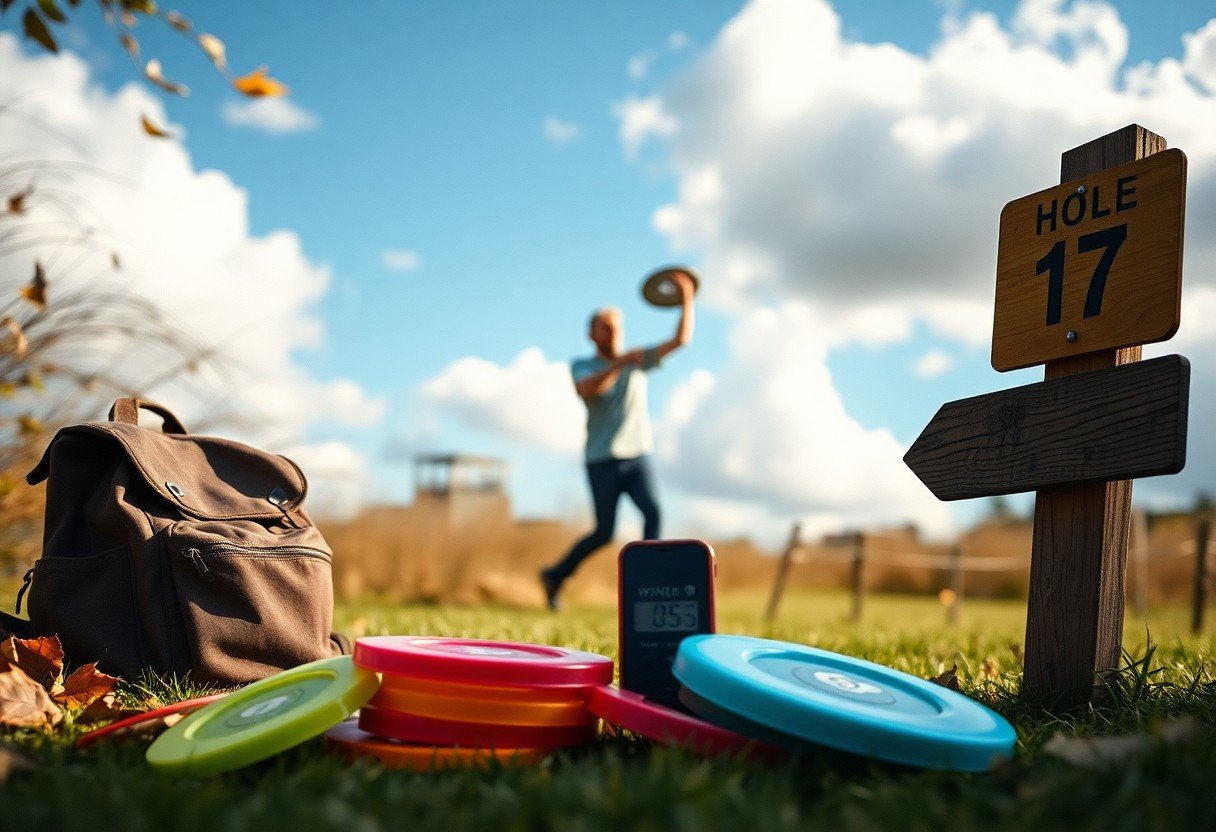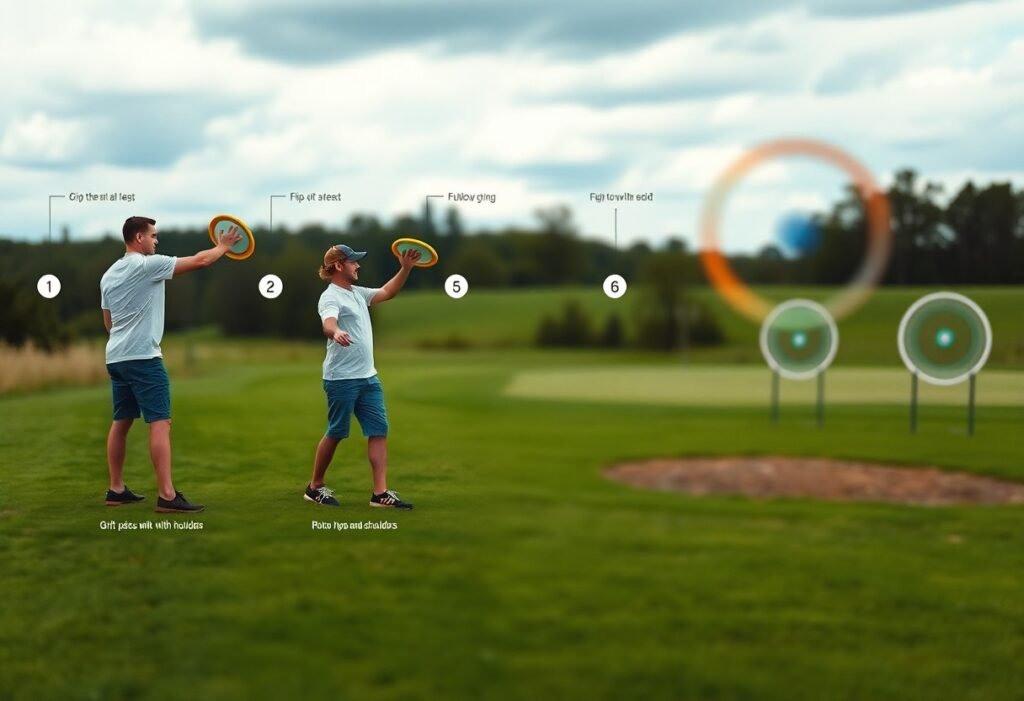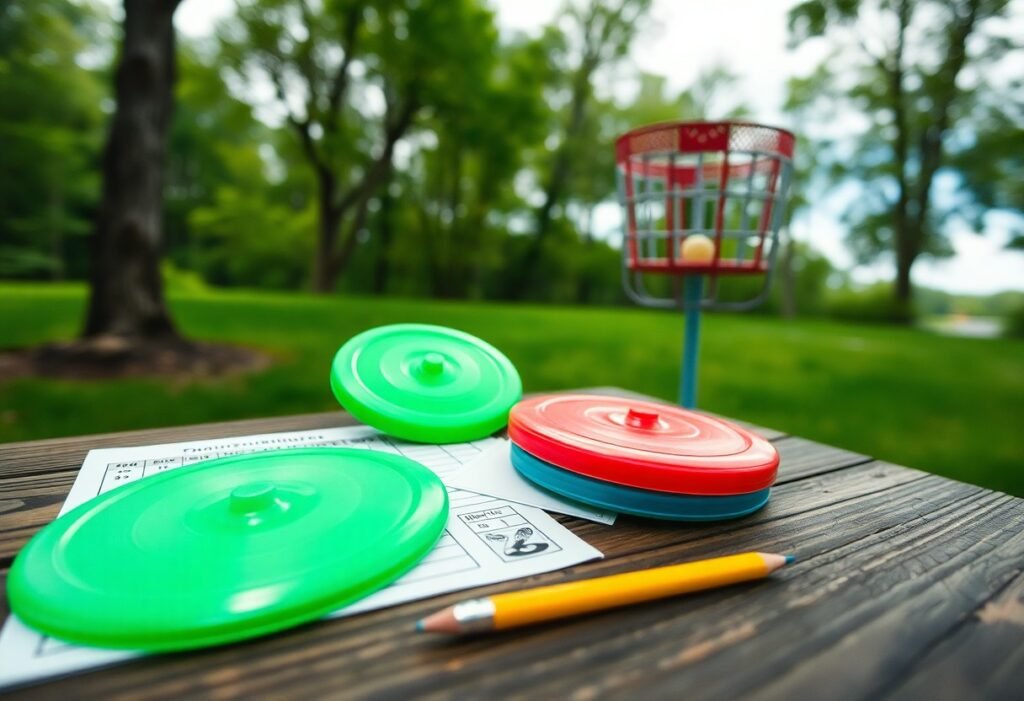This guide will equip you with the crucial strategies to tackle windy conditions when playing disc golf. By understanding how wind affects your throws and employing the right techniques, you can improve your accuracy and control in challenging weather. You’ll learn how to select the best discs, adjust your throwing style, and make smart course choices to enhance your game. With these tips, you can turn a potentially frustrating experience into an opportunity for growth and success.
Key Takeaways:
- Choose stable and overstable discs to maintain control in windy conditions.
- Adjust your throwing angle to account for wind direction, opting for lower releases to reduce lift.
- Practice grip and release techniques to enhance consistency and accuracy despite turbulence.
Understanding Wind Conditions
Types of Winds
In disc golf, various wind types can significantly impact your game. Understanding these winds is key to mastering your throws and course strategies. Below is a breakdown of the main types of winds you’ll encounter:
| Type of Wind | Description |
| Headwind | Blows directly against your throw, causing discs to stall. |
| Tailwind | Blows from behind, giving your disc extra distance. |
| Crosswind | Blows perpendicular to your throw, affecting disc stability. |
| Variable Wind | Shifts direction frequently, adding unpredictability. |
| Downdraft | Causes discs to drop quickly, often near obstacles. |
Any wind type requires careful adjustment in your technique and strategy.
Effects of Wind on Disc Flight
The wind significantly alters how your disc behaves in the air. A strong headwind can make your disc lose lift, resulting in an unpredictable, lower flight path. Conversely, a tailwind can increase distance and carry but may also lead to less accuracy. Understanding how to read these wind effects allows you to adapt your throws accordingly, enhancing your performance on the course.
When the wind picks up, it interacts with the aerodynamic properties of your disc. In headwind situations, you might find that lighter plastic or more stable discs behave poorly, often stalling or slicing downwards. In contrast, during a tailwind, the same discs can soar with unexpected distance, but you risk overshooting your target. Crosswinds can push your disc off course, requiring compensatory adjustments in your throwing angle. It’s important to adapt your grip and release point to account for wind influences, allowing you to maintain control and accuracy amid challenging conditions.
Choosing the Right Disc
Disc Stability Ratings
Understanding disc stability ratings is fundamental when selecting a disc for windy conditions. Discs are rated as overstable, stable, or understable, with overstable discs resisting the wind better. You’ll want to opt for discs with a higher stability rating to ensure that they maintain their intended flight path, even when faced with strong gusts.
Weight Considerations
The weight of your disc plays a significant role in how it performs in the wind. Heavier discs, typically 175 grams, cut through the wind more effectively than lighter ones. However, if you prefer lighter discs for easier throws, they may require greater control and skill to navigate windy conditions successfully.
Generally, heavier discs provide better stability in turbulent air, allowing you to make precise throws. If you’re accustomed to lighter discs, consider increasing your weight incrementally to find a balance that still feels comfortable while maximizing wind resistance. An effective combo of weight and stability will enhance your overall performance on windy days.
Disc Types for Windy Conditions
Certain disc types excel in windy conditions, such as distance drivers and overstable putters. Distance drivers tend to have sharper edges and tighter wings, enabling them to cut through headwinds effectively. Overstable putters provide reliability and precision, especially on short approaches and tricky lies.
| Disc Type | Characteristics |
| Distance Drivers | Designed for maximum distance, good for strong winds. |
| Overstable Midranges | Maintain stability during throws; ideal for controlled shots. |
| Overstable Putters | Reliable in windy conditions; excellent for short throws. |
| Stable Fairway Drivers | Good for versatility; can handle moderate winds well. |
| Wind-Resistant Discs | Specifically built to combat strong winds; must-have for serious players. |
Selecting the right disc for windy conditions can dramatically improve your game, especially when you consider various attributes like stability, weight, and type. Experimenting with different options will help you discover what suits your throwing style best. Thou will find that a well-chosen disc can make all the difference in your performance on breezy courses.
- Pay attention to stable ratings.
- Heavier discs offer better wind resistance.
- Consider disc types based on your playing style.
- Practice with various weighs to find your balance.
- Your disc choice can enhance your chances of success.

Adjusting Your Throw Technique
Grip Modifications
In windy conditions, *modifying your grip* can enhance control and stability. Consider using a firmer grip to reduce the likelihood of the disc being affected by gusts. A more stable grip helps maintain better flight paths, allowing for precision in unpredictable winds. Ensure your fingers are securely positioned, and be conscious of adjusting based on the wind direction.
Throw Angles
Adjusting your *throw angles* is vital to counteracting wind effects. A flat release is often advantageous in crosswinds, while a slight hyzer angle can prevent the disc from being lifted too high, reducing the chance of it being affected by gusts. Practicing these angles helps you anticipate how the wind will influence your throws.
When throwing into the wind, aim for a lower angle to minimize lift; conversely, in tailwind conditions, a steeper angle can help you achieve greater distance. If you’re throwing sidearm, *tilt your wrist down* slightly to combat the wind’s push upward. Understanding and practicing these angles enhances your adaptability on the course.
Follow-Through Adjustments
Adjusting your *follow-through* is necessary in windy conditions to maintain control. Focus on a shortened follow-through to limit the chance of the wind influencing the disc post-release. A more compact motion helps ensure steadiness and accuracy, keeping your throws on target despite unpredictable gusts.
Moreover, a controlled follow-through can help reduce the overall movement of your body, limiting the impact of wind interference. By landing your throwing arm closer to your body rather than extending it fully, you’ll enhance stability and keep your disc’s trajectory intentional. Practice this adjustment to develop a reliable routine for windy days.

Strategic Course Management
Selecting the Right Holes
When facing wind, thoughtfully selecting the right holes can greatly influence your performance. Choose holes that feature natural windbreaks, such as trees or elevation changes, which can shield your throws and reduce the risk of errant disc flight. Certain holes may be inherently challenging due to crosswinds; prioritizing your stronger throwing abilities on favorable layouts will enhance your overall score.
Understanding Basket Placement
Being aware of basket placement is important in windy conditions. Baskets positioned near hazards or on elevated areas can be significantly affected by gusts, impacting your approach and putting strategy. By assessing the layout, you can anticipate how the wind may impact your disc on final approaches to the basket.
Pay special attention to baskets placed at the top of hills or near large trees, as these can create swirling winds that complicate your putts. For example, a basket tucked behind a tree may allow for more predictable conditions, while one directly on a hillside can result in erratic airflow, making precise putting vastly more difficult. Adjusting your strategy based on these factors can shave strokes from your score.
Playing to Your Strengths
Emphasizing your strengths is vital when navigating windy conditions. Focus on shots that highlight your best throwing abilities, whether that’s a reliable hyzer flip or a controlled forehand. Leveraging your strengths can reduce the anxiety of dealing with unpredictable wind.
Consider using a shot type you’ve mastered, especially when faced with gusty conditions. If you’re confident in your backhand, trust it on longer holes instead of forcing unfamiliar throws that introduce more variables. For example, if your forehand is strong, utilize that technique for approaches and putting when wind picks up. This strategic focus allows you to play within your comfort zone while minimizing errors.
Mental Preparation for Windy Conditions
Staying Focused
You need to channel your energy into the game rather than the wind. Maintaining concentration is necessary; focus on your routine and each shot’s mechanics. By visualizing your shots and blocking out distractions, you create a mental barrier against the unpredictable gusts. Keep your breathing steady and let go of thoughts about the wind’s impact on your performance.
Building Confidence
Trusting your abilities is vital when faced with challenging conditions. Confidence stems from practice; the more you train in varying winds, the more comfortable you become. Emphasize your past successes and remind yourself of the times you excelled despite external factors, reinforcing your belief in your skills.
Consider reviewing your best performances in windy conditions. Analyze which techniques worked and harness that knowledge to boost your assurance. You might set a goal to play in the wind once a week, gradually increasing your exposure to the elements. This consistent practice will naturally elevate your confidence, making you less susceptible to the psychological effects of windy play.
Remaining Adaptable
Flexibility in your approach can make all the difference when the winds change unexpectedly. Be prepared to modify your throw styles and disc selections based on current conditions—this adaptability can lead to better outcomes and improved scores. Assess how gusts affect your discs and adjust your strategy accordingly.
During your rounds, pay attention to how different wind directions influence your shots. You might find that a backhand throw works well into the wind while a forehand is better with a tailwind. Keep an eye on wind patterns throughout the course and feel free to change your game plan when necessary. By being adaptable, you can prevent frustration and turn potential setbacks into opportunities for creative shot-making.

Tips and Tricks for Discing in Wind
- Adapt your throwing technique to counter the wind.
- Choose discs with stable flight characteristics.
- Utilize body mechanics to maintain balance.
- Consider wind direction and speed before each throw.
- Practice adjusted putting techniques in breezy conditions.
Warm-Up Practices
Engaging in a solid warm-up routine is vital when facing windy conditions. Focus on stretching your arms, shoulders, and legs to promote flexibility and prevent injury. Include light throwing exercises to acclimate your muscles to the tension created by the wind, while also building muscle memory for your adjusted throws.
Using the Right Gear
Selecting the right gear can significantly improve your performance in windy conditions. Opt for discs that are more wind-resistant, as they tend to have a stable flight path. A heavier disc may help cut through the wind better, providing more control during your shots.
When opting for your discs, prioritize those specifically designed for windy conditions, such as overstable drivers and midranges. These discs are crafted to handle gusts better and minimize unwanted turnovers. Additionally, wearing comfortable apparel that doesn’t obstruct your range of motion can enhance your throwing capability, ensuring you stay nimble in unpredictable conditions.
Learning from Experience
Each round in windy conditions offers lessons that can refine your approach. Take time after your game to analyze what worked and what didn’t. Adjust your strategy based on the wind’s impact on your throws and putting.
Documenting your experiences can be beneficial. Track the wind conditions, your chosen discs, and outcomes after each outing. Over time, you’ll develop a personalized playbook that informs your upcoming games, increasing your confidence and adaptability when facing the challenging elements. Perceiving the patterns of wind can give you an edge in mastering this unpredictable sport.
To wrap up
Considering all points, playing disc golf in windy conditions requires adjustments to your approach. You should select stable discs to handle gusts effectively, utilize low shots to minimize wind interference, and tweak your grip and throw techniques for better control. Focus on your form and play strategically by choosing the right angles. For more insights on equipment to combat the wind, check out The Best Discs for Windy Days: Navigating Gusts with ….
FAQ
Q: How can I adjust my throw for windy conditions?
A: In windy conditions, use a lower release point and a more stable disc. Focus on shorter, more controlled throws to reduce air resistance. Consider throwing less stable discs if tailwinds are present.
Q: What type of discs are best for windy weather?
A: Overstable discs work well in the wind as they resist flipping and maintain their line. Midrange and putter discs can also be effective due to their lower glide and stability.
Q: Should I change my throwing technique in the wind?
A: Yes, adjust your technique by keeping your arm close to your body during the throw and using a more compact motion. This helps maintain control and accuracy despite wind influences.
Q: How do environmental factors affect gameplay in wind?
A: Trees, buildings, and terrain can create unpredictable wind patterns. Be aware of these factors and adjust your aim accordingly to anticipate wind shifts.
Q: What’s the best strategy for putting in wind?
A: For putting in windy conditions, adopt a lower stance and aim for a more direct line to the basket. Use a more stable putter and focus on a consistent, confident release.
Q: How can I practice for windy conditions?
A: Practice in moderate winds to build confidence. Focus on different throws, angles, and discs to understand how they behave in various wind strengths. Simulate windy conditions during practice rounds.
Q: What should I wear while playing disc golf in the wind?
A: Wear lightweight, wind-resistant clothing that allows for freedom of movement. Consider layers to manage temperature changes and durable shoes for varied terrain.











